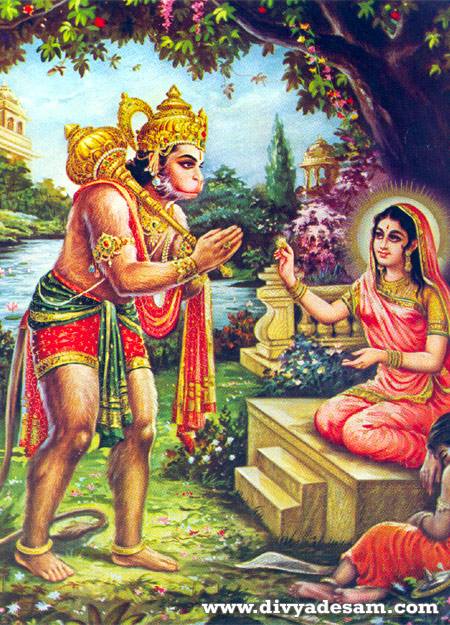
His bow, a gift from the demigod Indra, was a supreme Army and Air Force in itself.

He discharged His feathered arrows in sheets which blotted out the blue of the sky and which entered the hearts of the enemy in unlimited numbers at incredible velocity. He stood before them like a hill of nuclear missiles. But the enemies of Rama were allowed no such miscalculation as to His ability to destroy. If we take military history as an evolution of progressively more deadly weapons, we may slight the figure of Rama, possessing no more than a bow and arrow. After some hesitance by Dasharatha, who was loathe to have his son part for a dangerous mission, Ramachandra went forth. While Rama was still a boy of 16, the yogi Vishwamitra approached King Dasharatha and asked that Rama be allowed to travel on a military campaign against two Rakshasas who were attacking the hermitages of saintly persons, interrupting the performance of sacrifice.

Ramachandra is described as being of greenish hue, His bodily luster like fresh green grass. Together, the two brothers appeared on Earth to vanquish the almost invincible atheist king Ravana and his numberless host of Rakshasa (man-eating) warriors. Inseparable from Rama was Lakshmana, His younger brother.

He possessed all physical strength, beauty, religious wisdom, fame for prowess with weapons, royal wealth, and complete renunciation. Rama had all the admirable qualities of leadership, even from earliest youth. Lord Rama was the darling of His father and mother, Queen Kaushalya, as well as the hero of all Ayodhya, the capital of what was then a single world kingdom. Ramachandra appeared in the Sun Dynasty as the son of King Dasharatha, in the line of King Ikshvaku, the first ruler of the Earth. His pastimes were recorded by the poet Valmiki in the epic Ramayana.

Millions of years ago, in the age called Treta- yuga, the Supreme Personality of Godhead descended as a king, Lord Rama, or Ramachandra, to establish the principles of religion, morality and righteousness.


 0 kommentar(er)
0 kommentar(er)
